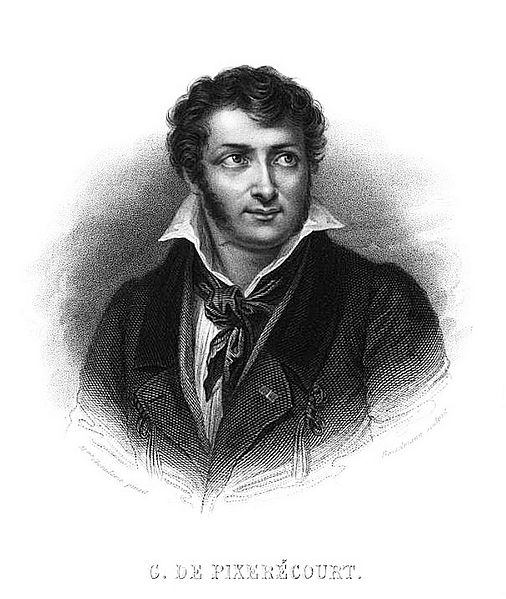René-Charles Guilbert de Pixérécourt
René-Charles Guilbert de Pixerécourt was a French theatre director and playwright, active at the Théâtre de la Gaîté and best known for his modern melodramas such as The Dog of Montarges, the performance of which at Weimar roused the indignation of Goethe.
René Charles Guilbert de Pixérécourt, engraving by Nosselmann, after a painting by Sophie Chéradame
Costume sketch for the actor Ferdinand in the rôle of the Tsar in La Fille de l'exilé, given at the Théâtre de la Gaîté, 13 March 1819
Théâtre de la Gaîté (boulevard du Temple)
The Théâtre de la Gaîté, a former Parisian theatre company, was founded in 1759 on the boulevard du Temple by the celebrated Parisian fair-grounds showman Jean-Baptiste Nicolet as the Théâtre de Nicolet, ou des Grands Danseurs. The company was invited to perform for the royal court of Louis XV in 1772 and thereafter took the name of Grands-Danseurs du Roi. However, with the fall of the monarchy and the founding of the First French Republic in 1792, the name was changed to the less politically risky Théâtre de la Gaîté. The company's theatre on the boulevard du Temple was replaced in 1764 and 1808, and again in 1835 due to a fire. As a result of Haussmann's renovation of Paris, the company relocated to a new theatre on the rue Papin in 1862, and the 1835 theatre (pictured) was subsequently demolished.
The Théâtre de la Gaîté's fourth and last theatre on the boulevard du Temple, used from 1835 to 1862
According to Howarth this is Nicolet's first theatre on the boulevard du Temple (before 1762). Other authors have identified it as Nicolet's theatre at the Foire Saint-Laurent. A parade, a short comic entertainment designed to entice passersby to buy tickets, is being performed on the balcony. Gouache, Musée Carnavalet.
An entr'acte at Nicolet's theatre
Plans of the Ambigu-Comique (left), which opened in 1769, and the Gaîté (right), which opened in 1764






